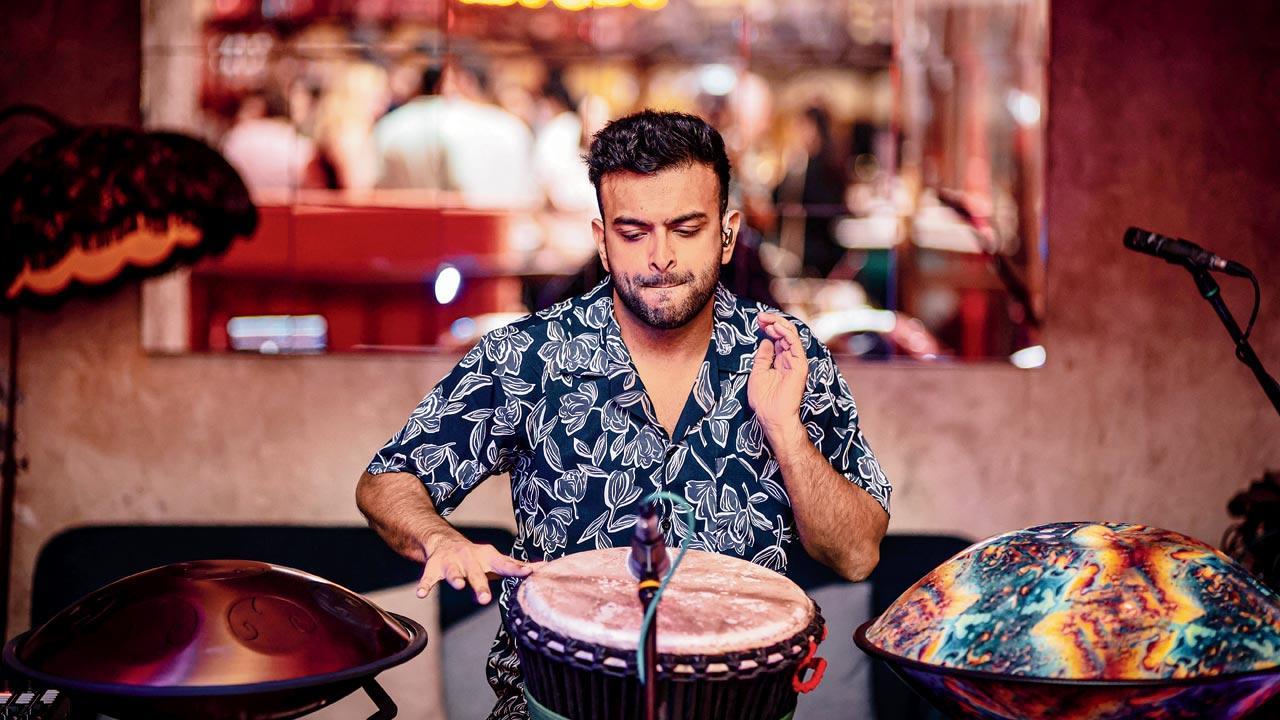For couples getting married in 2023, just a plain recital of mantras won’t cut it. If you want to revamp the boring old phera, Shloka fusion music is the newest rage

Mihir Chandan says shloka fusion “lifts” mantras and gives them a sense of relatability, especially to a younger audience
Indian weddings are aggrandised as a celebratory epic for the ages, replete with Bollywood-style dance-offs and music, but this account leaves out a small, minor, detail: the process of sitting through the traditional rituals with sometimes 50+plus guests. But the youth are full of great ideas, and young couples getting married today have found a way around the “boredom” that surrounds pheras. Enter shloka fusion sets, essentially mantras set to the tune of catchy electronic beats.
Mihir Chandan, a music producer, DJ, and multi-instrumentalist, says that he conceptualised the idea of “shloka fusion” music to connect people with their heritage in a manner that appeals to the needs of the modern audience. “The fusion act stays true to the ethos and sanctity of the Indian wedding, but adds a new-age style with modern music production elements,” he explains.
ADVERTISEMENT
Chandan, who also holds the title of “Asia’s first electronic handpan artiste”, calls this fusion of electronic beats and shlokas the “Mantra Act”. The two-hour set involves a three-member team, and six instruments, including the flute, handpan, a Turkish instrument called the “darbuka”, dejembe, an African-Caribbean instrument, and the tabla. In the traditional elements, it’s either the sitar or sarod—or a violin, if the couple prefers western music. The vocalist sings the chants and mantras, while Chandan accompanies her on the instruments. “The handpan is an instrument based on frequencies, and it adds a positive energy to the rituals,” he says. It’s challenging to perform with so many instruments at a single time, he adds, because you might end up not doing justice to a single instrument.
Chandan, who has performed for more than 15 wedding pheras acts since December last year, composes the music by “mashing” together techno tracks, like Ben Böhmer’s Father Ocean soundtrack with shlokas such as the “Gayatri Mantra”—his personal favourite. The entire act is reduced to a harmonic breakdown of scales, incorporating Ganesha-based shlokas, then Krishna, then Shiva-based ones, as the wedding progresses.
The first time he performed his set was at Kanan Gupta’s wedding at the Taj Mahal Palace in December 2022. “My husband and I are an eclectic mix of modern and traditional; we wanted the sound of temple bells for the varmala, but weren’t convinced how it would sound,” Gupta explains. “We wanted a temple bell, with a modern take.” That’s when they came across Chandan, who played around with the scales of the temple bells to make it sound less heavy and more soothing and “cooler”. “We didn’t want to take away from the Pandit ji’s shloka recitation, but at the same time, we wanted a light layer of background music to accompany the shlokas,” she adds.
Meghna Bajaj, a PR consultant who got married in February this year, says she wanted to keep her wedding “culture-focused” yet “entertaining” at the same time for her 3,000 guests. “Ameya Dabli, a Mumbai-based singer sang the shlokas with his band for my wedding. During the most boring rituals too, I noticed the guests sitting and listening attentively—right from the varmala, when he started with an energised and upbeat version of the Ram chant, onto the pheras, where he took on a modern take on the traditional Sanskrit shlokas.”
Chandan has the same views; he aims to “upgrade” the shlokas while keeping it tied to its origins. “I’ll be adding a Rajasthani instrument called the ‘morchang’, one of the oldest instruments in Indian history, and the saxophone to my act, making it an eight-piece act,” Chandan concludes. “I want to bring back traditional instruments that are not being used, to showcase Indian culture and legacy.”
 Subscribe today by clicking the link and stay updated with the latest news!" Click here!
Subscribe today by clicking the link and stay updated with the latest news!" Click here!








